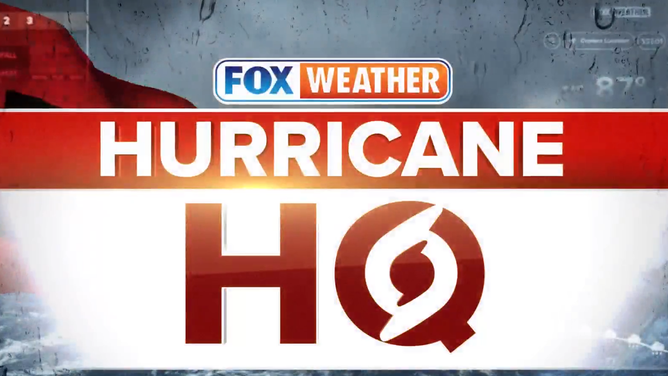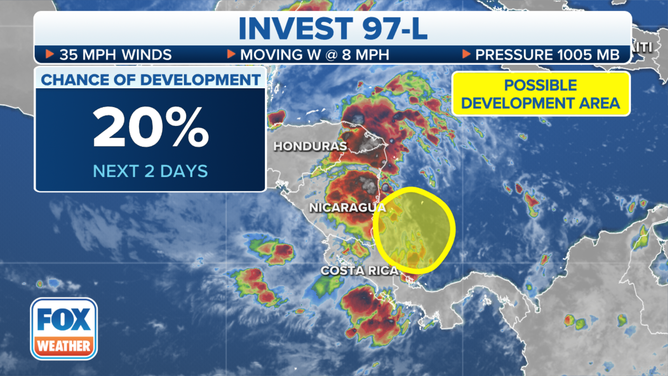Bryan Norcross: Caribbean tropical disturbance Invest 97L dumping heavy rain over Central America
The system is interacting with a broad area of low pressure that often stretches from the South American coast into the Pacific this time of year, which is accentuating the already-rainy pattern.

FOX Weather is your Hurricane HQ, streaming free 24/7.
(FOX Weather)
Updated Saturday at 9:15 a.m. EDT
The tropical disturbance we’ve been following across the Caribbean, known as Invest 97L, is spreading heavy rain over much of Central America. The system is interacting with a broad area of low pressure that often stretches from the South American coast into the Pacific this time of year, which is accentuating the already-rainy pattern.
This weekend, there will be the risk of flash flooding and mudslides in and near higher terrain from Nicaragua, Honduras, Belize and parts of the Yucatán Peninsula in Mexico. Early next week, the system will move into the Pacific and is forecast to dissipate.

Invest 97L has a low chance of development.
(FOX Weather)
On balance, it’s lucky that this is such a large system. Yesterday, it passed over extraordinarily warm Caribbean water and through a patch of atmosphere that was extremely conducive for development. If you blurred your eyes at the satellite presentation, it looked like a well-developed tropical storm or hurricane. Close inspection, however, showed that the system had no core whether the winds were converging, and an organized circulation had developed.
The disturbance’s large size was apparently the inhibiting factor for development. Large systems take more time to organize essentially because there are more cats to herd. The supremely conducive atmosphere was only in place for a day or so, and the window closed when the bulk of the system moved ashore and started interacting with the mountainous terrain.
The only part of the Atlantic, Caribbean or Gulf that appears remotely conducive for tropical development in the next week or so is this same corner of the extreme southern Caribbean Sea. Sometimes, a non-tropical system sits over the still-warm ocean late in the year and gets a name, but there’s no indication of that in the computer forecasts. It’s likely the hurricane season is over for the U.S. and surrounding areas.